Moving through the second half of 1986, Frank Miller began to wrap up what would be his last work on corporate-owned characters for nearly seven years. One exception to this was Elektra Lives Again, a graphic novel written and illustrated by Miller which appears to have been started at around the same time as Daredevil: Love and War but not completed and published until 1990.
August 1986 saw publication of the final issue of The Dark Knight Returns. Meanwhile, Elektra: Assassin continued to excite and bewilder readers in equal measure, and in September Love and War delved into the Kingpin’s relationship with Daredevil in an attempt to explain just why he’s so bent on Matt Murdock’s destruction in Daredevil: Born Again.
August 1986
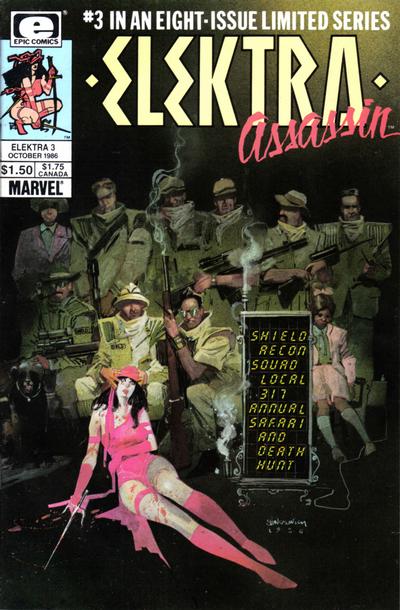
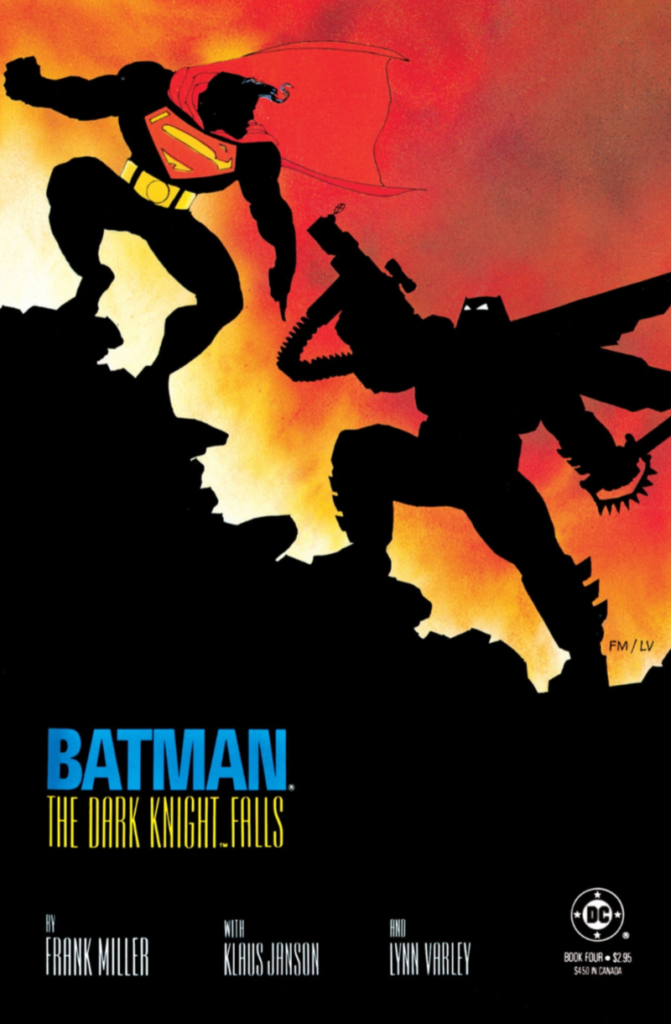
August 1986
Elektra: Assassin #3 “Rough Cut”
Story by Frank Miller; artwork by Bill Sienkiewicz; lettering by Jim Novak
Issue 3 of Elektra: Assassin contains a lot of dense, text-heavy exposition, enough that artist Bill Sienkiewicz employs a similar technique to what Miller uses to great effect in The Dark Knight Returns: a dense grid of images and captions interspersed with full page illustrations. He will occasionally break up or punctuate the grid with a larger full width panel when there is a sudden change in scene.
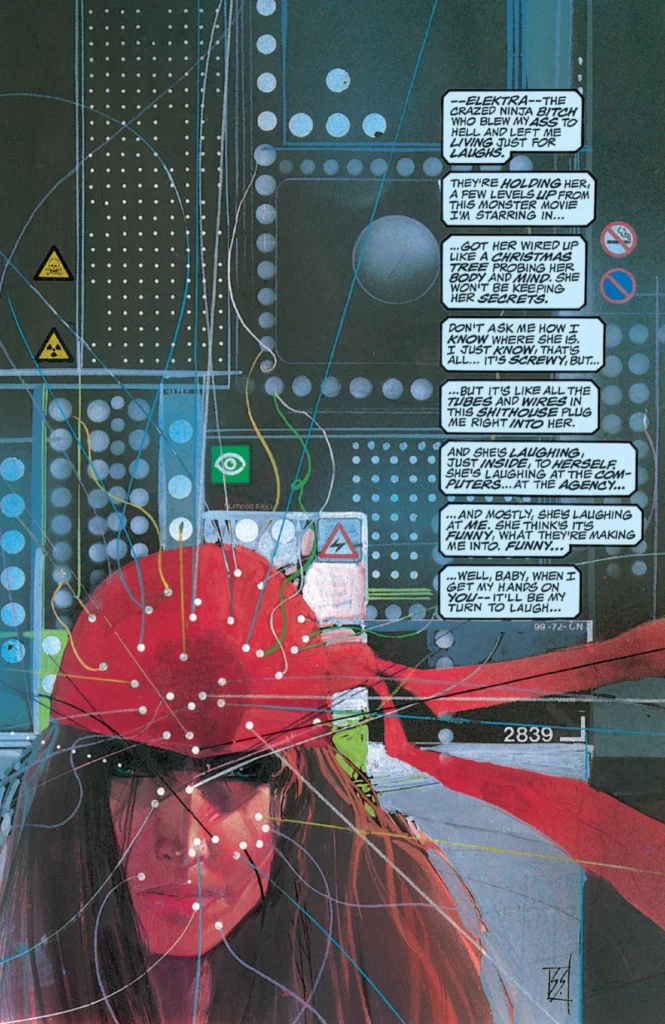
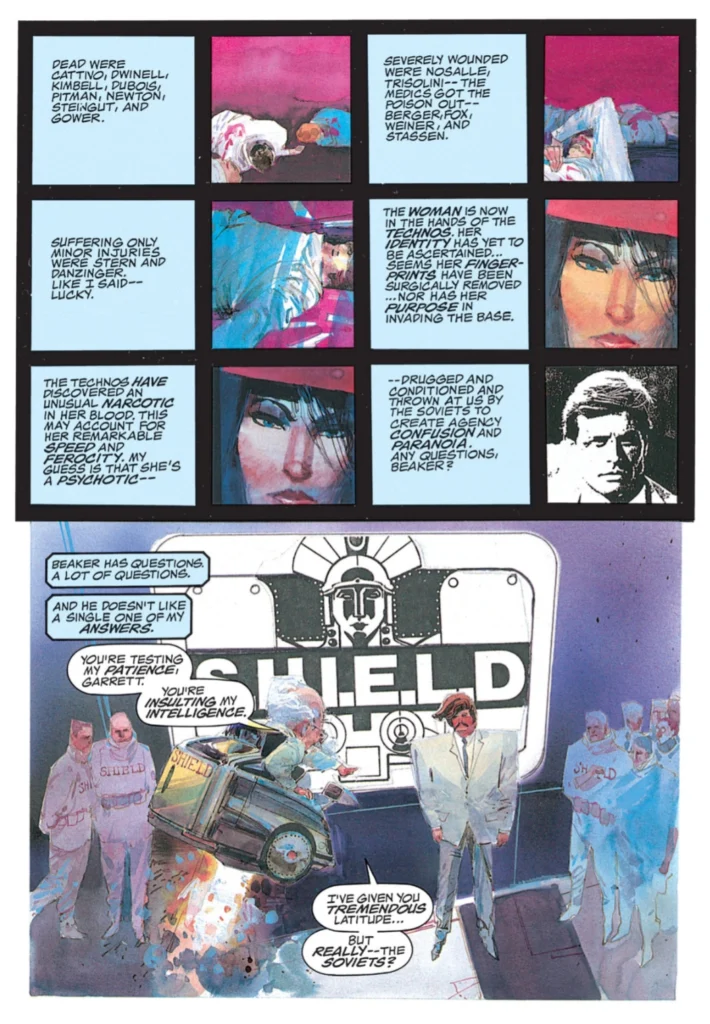
Elektra: Assassin #3 pages 3 and 10. © Marvel.
The bulk of the story deals with the aftermath of the events shown in the first two issues. Elektra is now a prisoner of SHIELD, and a lot of the issue’s exposition comes in the form of reports on her physical and psychological condition. These reports serve an important purpose in that they explain the plot, demonstrating that Elektra: Assassin isn’t just the incomprehensible, abstracted fever dream that it may have first appeared to be. It is, in fact, a coherent story, or at least a relatively coherent one.
Most of the issue is framed by an after-action report from Agent Garrett in which he describes what happened in the previous issue. It serves as a reasonable “story so far” recap, remembering that when Elektra: Assassin was originally published, trade paperback collections weren’t all that common, and the majority of the readers would be experiencing the story one issue at a time, with a month in between issues.

Garrett remains an unreliable narrator: he freely admits via his internal monologue that his report is largely spurious. He is covering for Elektra and he doesn’t know why. In the first few pages, we learn that Garrett’s body suffered irreparable damage in the explosion at the end of the previous issue. He’s been given a new, cybernetic body, but while hooked up to the same SHIELD medical computers that are probing Elektra’s mind, their consciousnesses become linked.
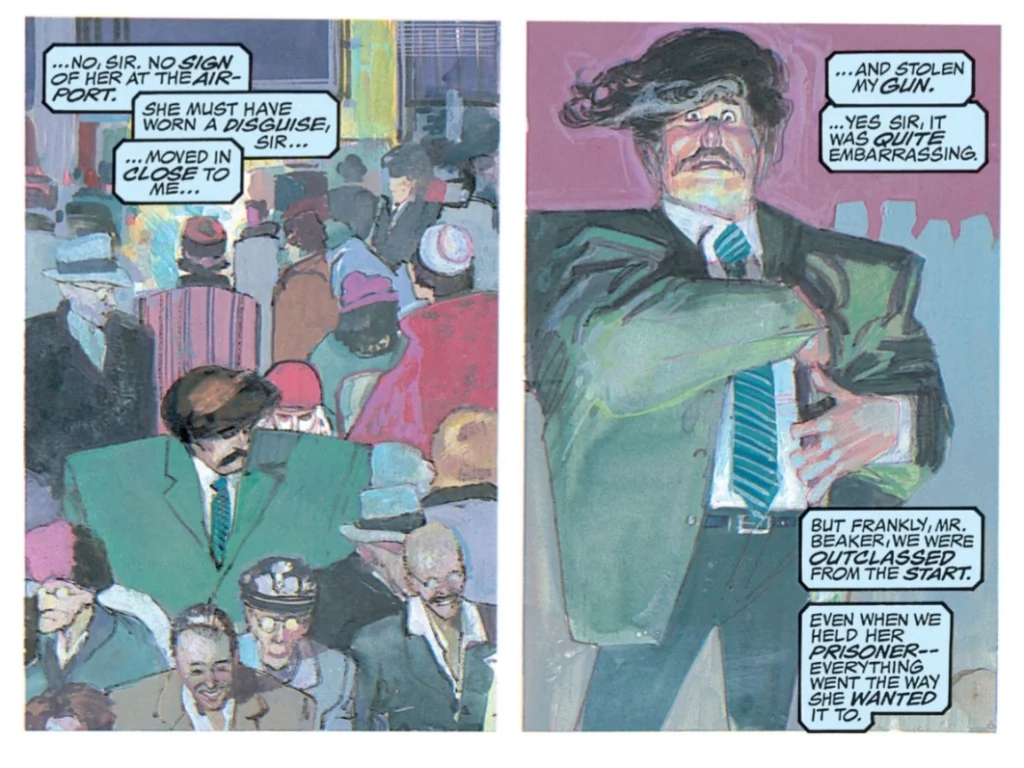
Miller goes to seemingly great lengths to present Garrett as an odious, unlikable man. He drinks to much, uses racial slurs (at least internally), and generally views everyone around him with a high level of contempt. It is made clear that he is not even remotely a hero, which makes his journey over the course of the series much more interesting, and also gives Elektra the moral high ground as she manipulates his mind in order to escape from SHIELD and continue her pursuit of The Beast, the supernatural entity that has taken up residence in the consciousness of U. S. presidential candidate Ken Wind, and who may still be merely a figment of Elektra’s imagination.
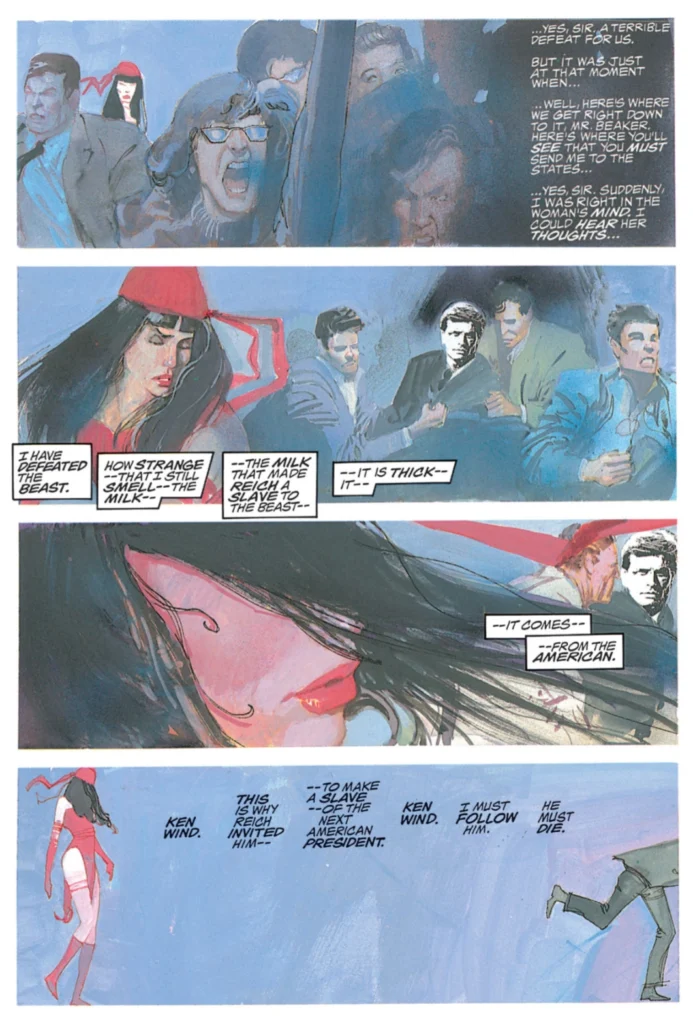
Batman: The Dark Knight Returns book four: “The Dark Knight Falls”
Story and pencils by Frank Miller; inks by Klaus Janson; colored by Lynn Varley; letters by John Costanza
Batman takes the last step on his journey from vigilante to full-fledged revolutionary in the final chapter of The Dark Knight Returns. The issue opens with a harrowing escape from authorities who wrongly believe Batman has murdered his arch-nemesis, the Joker. The sequence builds on what Miller has been working towards in the previous three issues, with even a severely wounded Batman running rings around an incompetent police force.
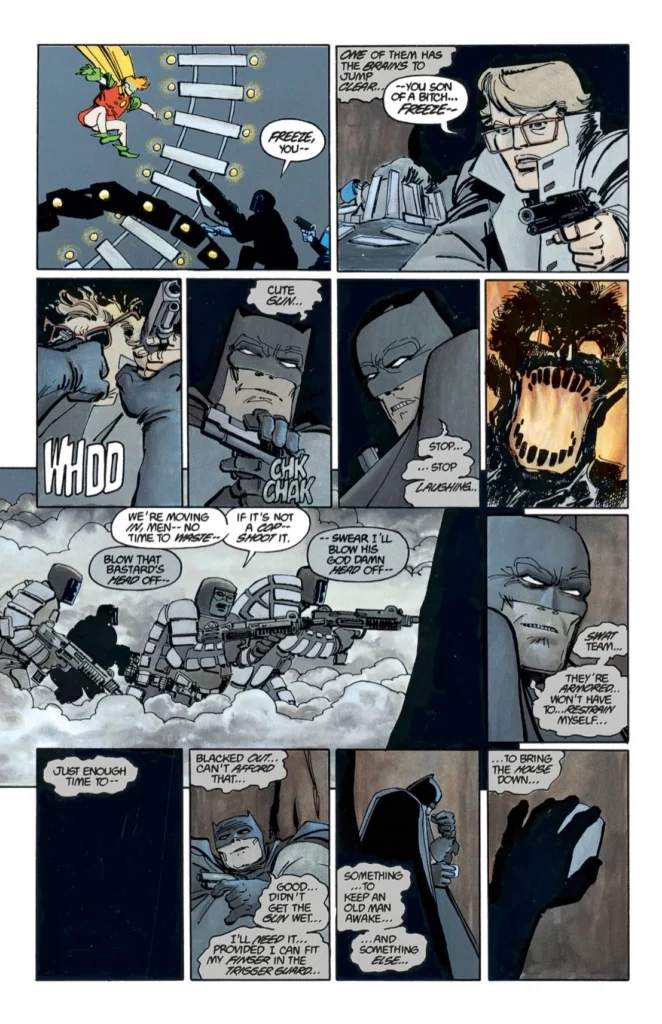
To drive his point home, Miller again makes great use of snippets of TV news “man on the street” style interviews, with Gotham’s citizens often showing support for Batman. In an urban environment where crime is out of control and the corrupt, incompetent authorities are unwilling or unable to keep the people safe. Miller has made it clear (as recently as in this interview on Vulture.com) that The Dark Knight Returns isn’t meant to depict a future dystopia – he is writing about the world he lives in, the New York City of the 1980s.
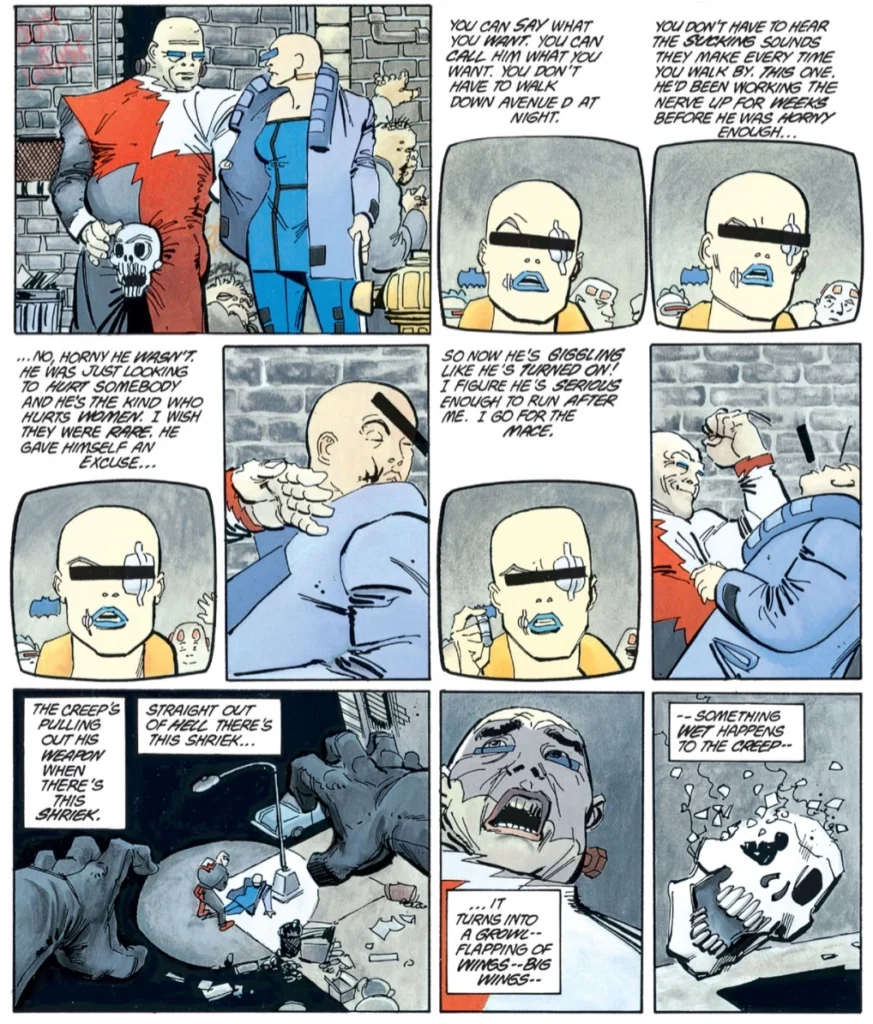
Miller even takes time to demonstrate that thuggish vigilantism is no better than the rampant crime it supposedly stands against. Former members of the Mutant gang from issue 2 have taken to calling themselves the “Sons of Batman” and embark on a wave of terror that mainly shows how badly they are missing the point.
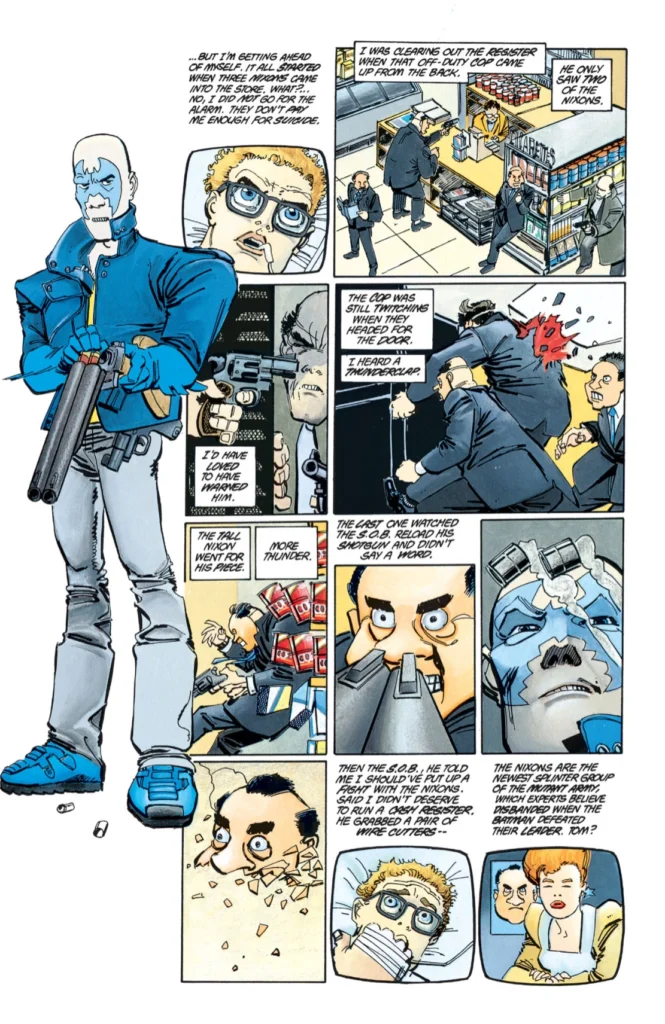
From here the story moves into what was one of the most prevailing sources of existential angst in the 1980s, as a Soviet missile strike (and the resulting nuclear armageddon) is narrowly averted by an increasingly world-weary Superman. The near-miss still causes untold damage in the form of an electromagnetic pulse that knocks out power and electronics, causing blackouts, plane crashes, and fires that send Gotham City spiraling into chaos.
With dense, layered storytelling that borders on the overwhelming, it is important to stop and consider Miller’s consistently stunning artwork. He seems acutely aware of how much material he is packing into the 16-panel grid that he uses for most of his pages. He makes great dramatic use of not just full page illustrations, but occasional panels that break out of the grid. The sequence where Superman delays the missile is a particularly breathtaking example of Miller’s minimalist drawing enhanced by Lynn Varley’s striking color work.
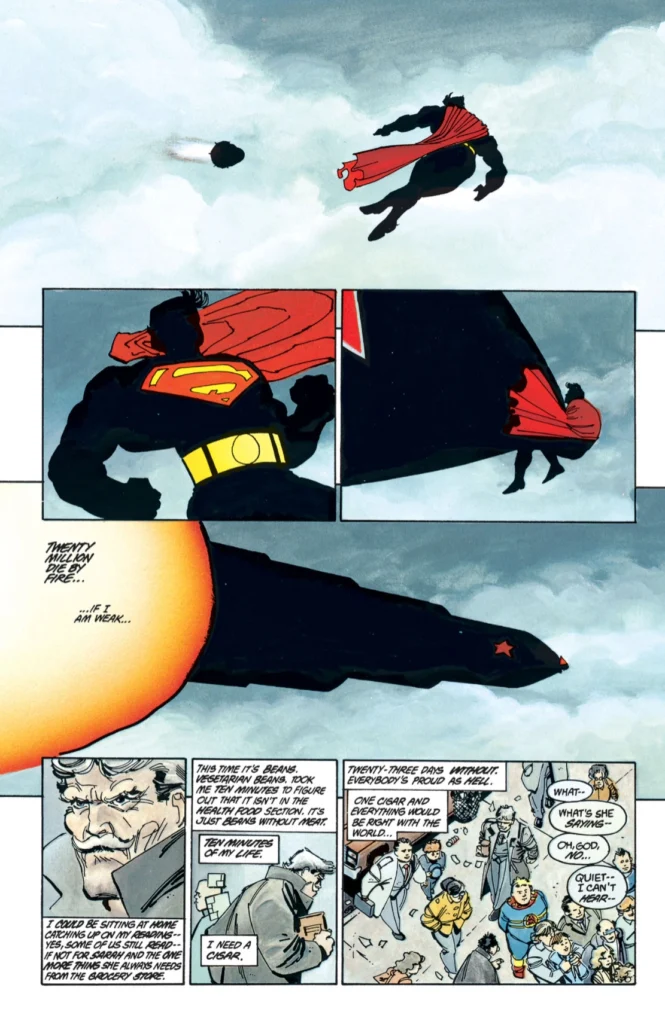
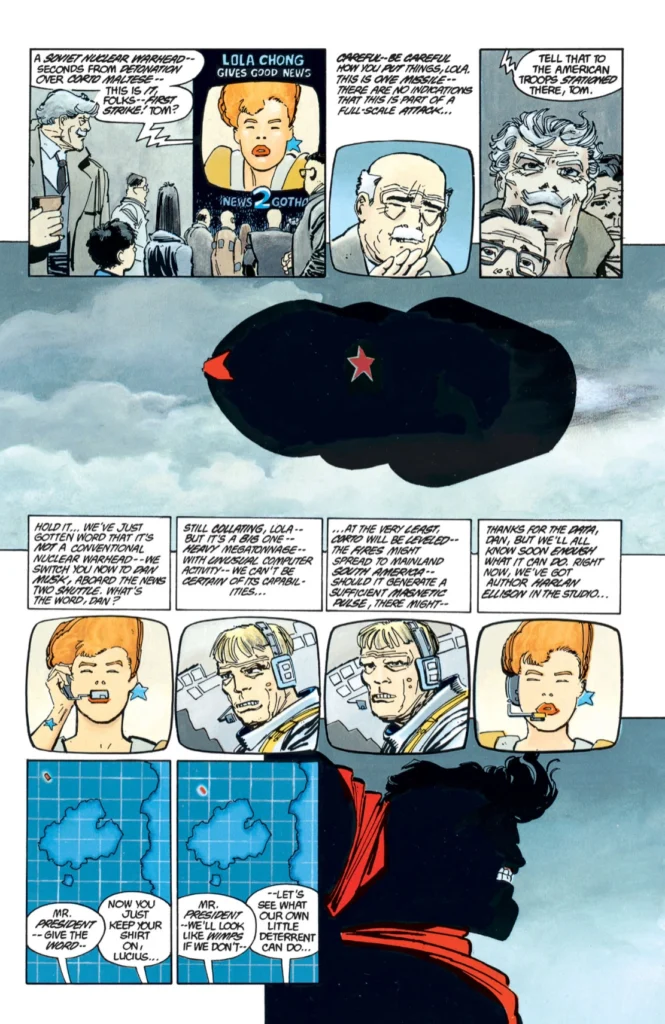
The Dark Knight Returns book 4 pages 11 and 12. © DC Comics.
With Gotham in flames, a barely recovered Batman must once again take it upon himself to make the city safe. The EMP has rendered all electronic and mechanical devices inoperative, so he and Robin ride into the city on horseback, recruiting the Sons of Batman and other former Mutant gang members to help get things back under control.
In spite of being a self-described libertarian, Miller seems to be taking an oddly authoritative stance. The Sons of Batman are determined to use the blackout as an opportunity to burn the city to the ground until Batman shows up to take control, bending them to his will and perhaps making a point about followers and leaders. A similar sequence featuring retired police commissioner Gordon galvanizing an unruly mob of looters into helping fight a fire serves to drive this point home: the leadership in Gotham may be failing, but the people still need leadership.
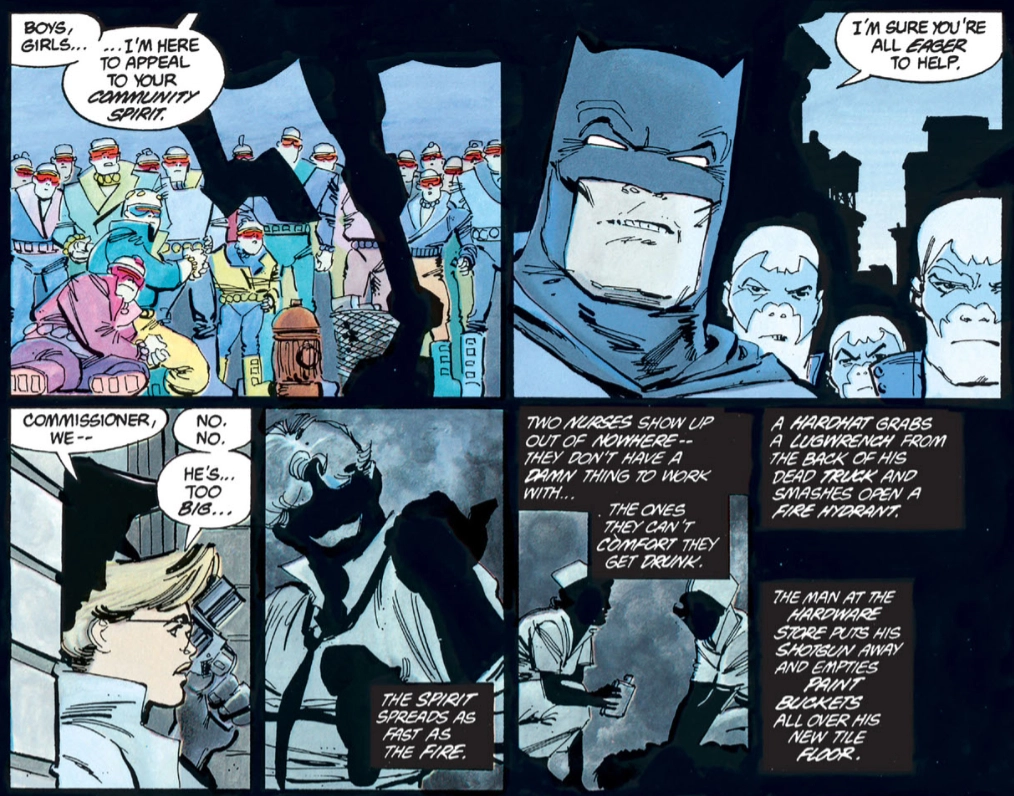
Returning to his tried and true technique of using multiple viewpoint characters, Miller tells the story of the Gotham blackout largely through the eyes of two unnamed civilians, one a selfish jerk and the other a more sympathetic priest. These two opposing viewpoints are pieced together to paint a picture of what I assume are some of Frank Miller’s frustrations with the culture of 1980s America: a culture capable of staggering greed and selfishness but also of moments of kindness and compassion. He needs to illustrate the latter to demonstrate that Batman’s mission isn’t in vain, that society is still worthy of being saved.
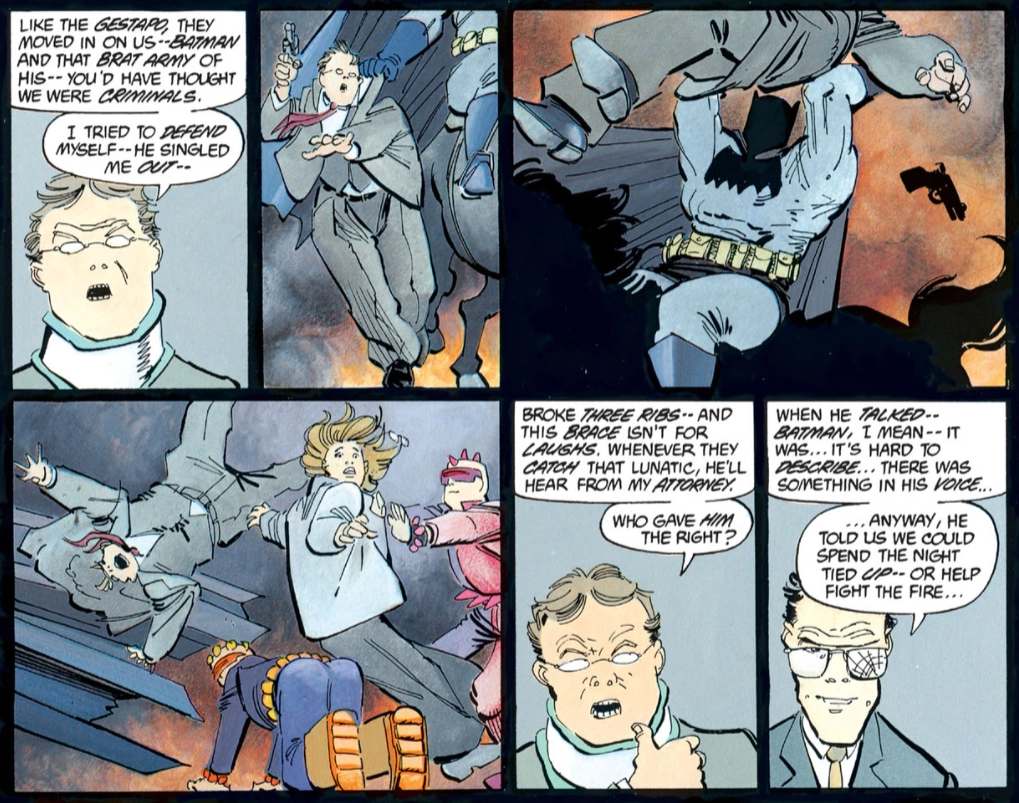
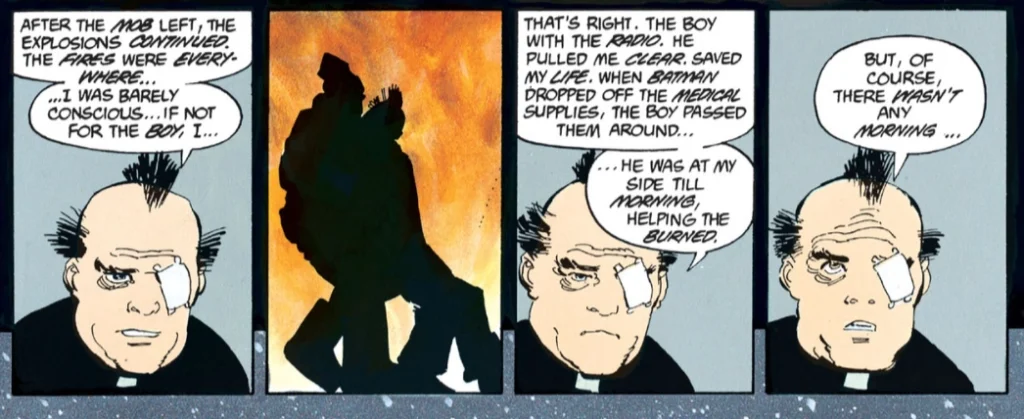
Miller vents more frustration about the state of American culture as news coverage of the effects of the blackout is constantly interrupted by insipid asides about celebrities and fashion.
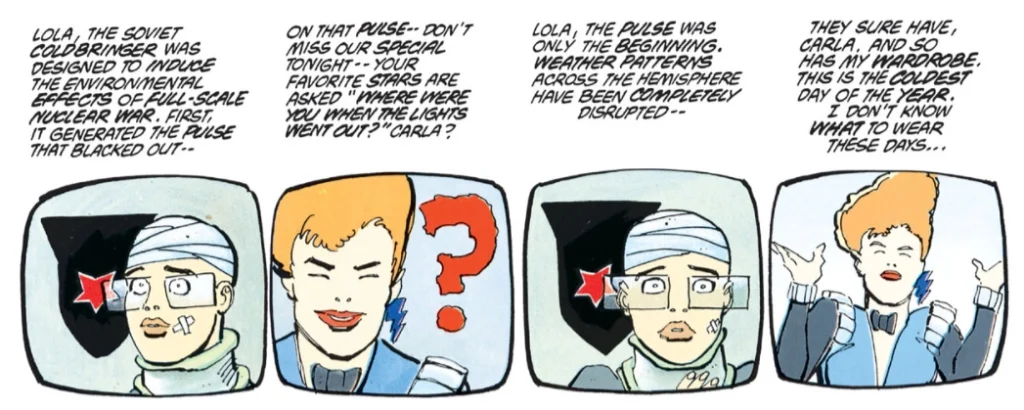
Batman’s very public ride through the city to quell the looting and riots has proven to be a step too far. He has embarrassed the authorities by doing their jobs for them, and as an operative of the government, Superman has to intervene. A time and place are set for their final duel to the death.
As Batman prepares for his fight with Superman, Miller can’t help illustrating what he sees as the fundamental differences between the two characters. Batman lacks Superman’s raw power, but he more than makes up for it with his meticulous planning, employing an embittered, one-armed Green Arrow to assist in what turns out to be a massive deception.
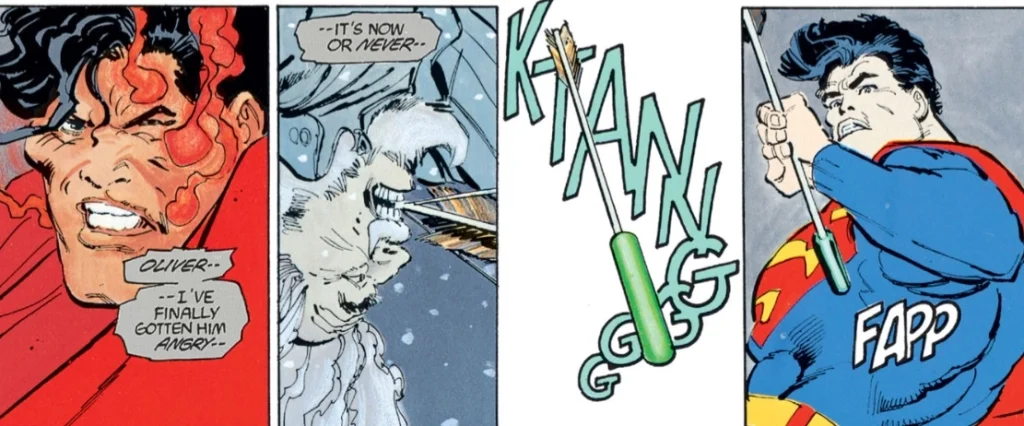
The vast majority of superhero stories proceed from the assumption that there are threats to the world that are simply beyond the abilities of the conventional authorities to deal with. These threats, be they super villains or natural disasters, are what the stories are about, and the need for a superhero to deal with them isn’t usually a criticism of the authorities, a position represented squarely by Superman in The Dark Knight Returns. But with this book, Miller is asking, why? Why aren’t our elected leaders protecting us? Why do we need Batman to save us? And how long can he go on treating the symptoms of a system that seems to be hopelessly corrupt and ineffective?
With the ending of The Dark Knight Returns, Miller hints rather strongly that Bruce Wayne has finally realized that beating up muggers isn’t going to make the world a safer place in the long run. As he puts it, he needs “an army – to bring sense to a world plagued by worse than thieves and murderers…”
When all is said and done, Batman is a vigilante, a person who operates outside the law when the system fails. It is fitting that what is meant to be the story of Batman’s ending has him pursuing the logical conclusion of that vigilantism by becoming a revolutionary.
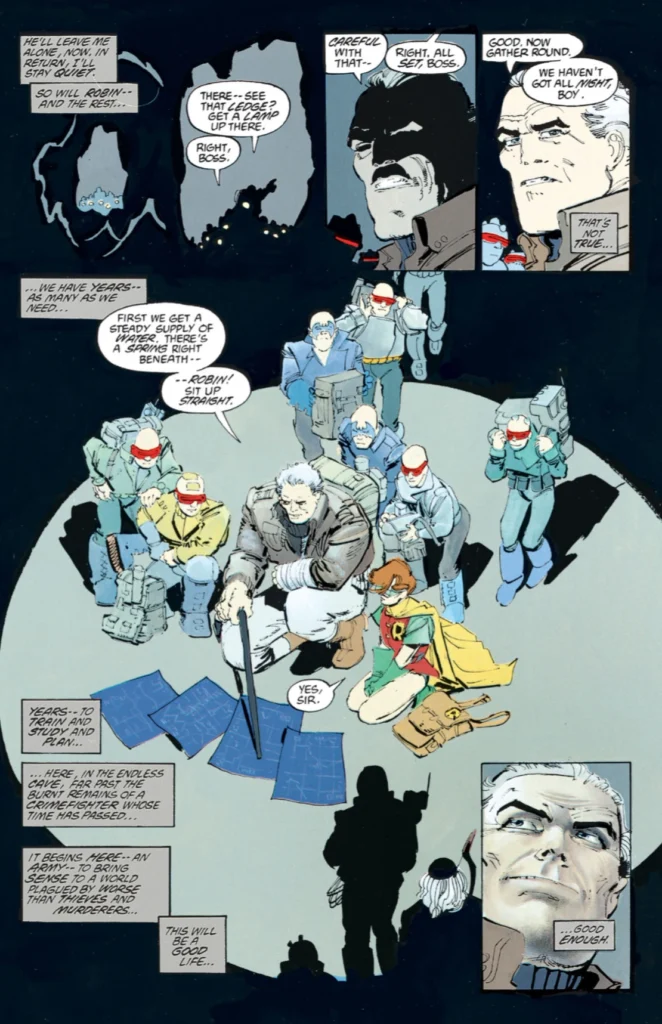
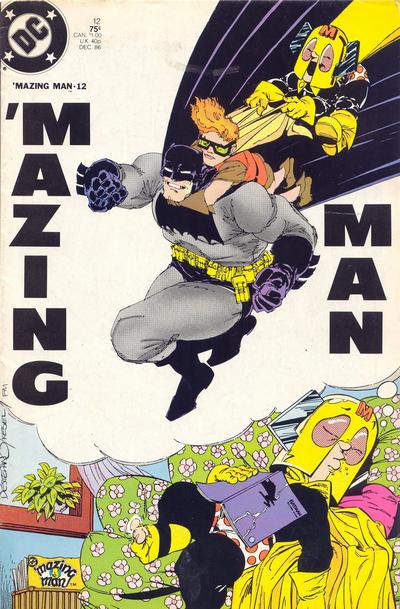
‘Mazing Man #12
Cover art by Frank Miller and Stephen DeStefano & Karl Kesel
Doing covers for series that they aren’t otherwise associated with is fairly common in the comics industry, especially among high-profile creators like Frank Miller. A cover by a popular artist could get a lot of extra attention for a lesser known series – indeed, there are many collectors who will buy issues of comics just for cover art by a favorite artist.
Understandably, Miller did very little in the way of covers for other series in 1986, but he was apparently a big fan of ‘Mazing Man, a gentle, good-natured series about a neighborhood do-gooder whose superheroics were mainly limited to “unclogging drains and watching out for local children” (Wikipedia). ‘Mazing Man never really found an audience in a comics landscape that was skewing towards more intense, serious fare, but in hopes of improving its profile Miller contributed a cover to what ended up being the series’ final issue. The increased attention wasn’t enough to save the series from cancellation, but it did get a further three one-shot issues, possibly as a result of Miller’s endorsement.
September 1986
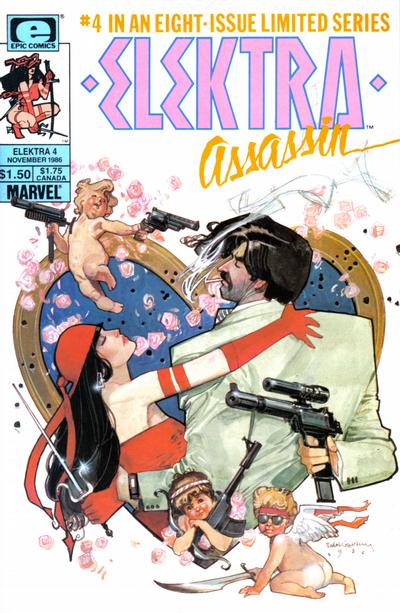
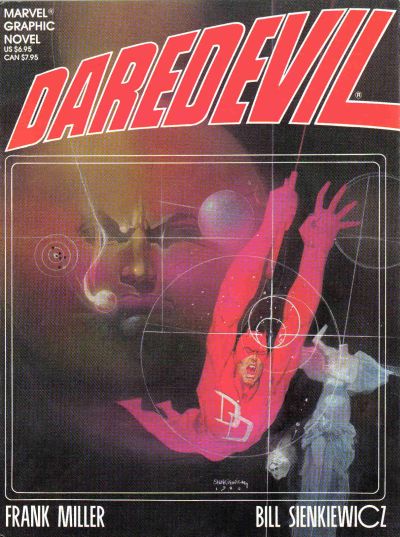
Elektra: Assassin #4 “Young Love”
Story by Frank Miller; artwork by Bill Sienkiewicz; lettering by Jim Novak
Elektra: Assassin issue 4 begins with a recap of the story so far. It’s possible that Miller was cognizant of the fact that, between the unreliable narrators and Sienkiewicz’s unusual (albeit stunning) artwork, the story might be a little difficult to follow. However, the frequent recaps could also have been the result of an editorial mandate. Jim Shooter, Marvel’s editor-in-chief, apparently had a thing about wanting every issue of every Marvel comic to be self-contained, the reasoning being that every issue was someone’s first. This would certainly make sense when applied to the majority of Marvel’s books which were sold at newsstands and grocery stores, where back issues wouldn’t be available. But Elektra: Assassin was only sold in comic book shops, so new readers coming in late wouldn’t have too much trouble catching up, so it didn’t really make sense to make the same assumptions about its readers.
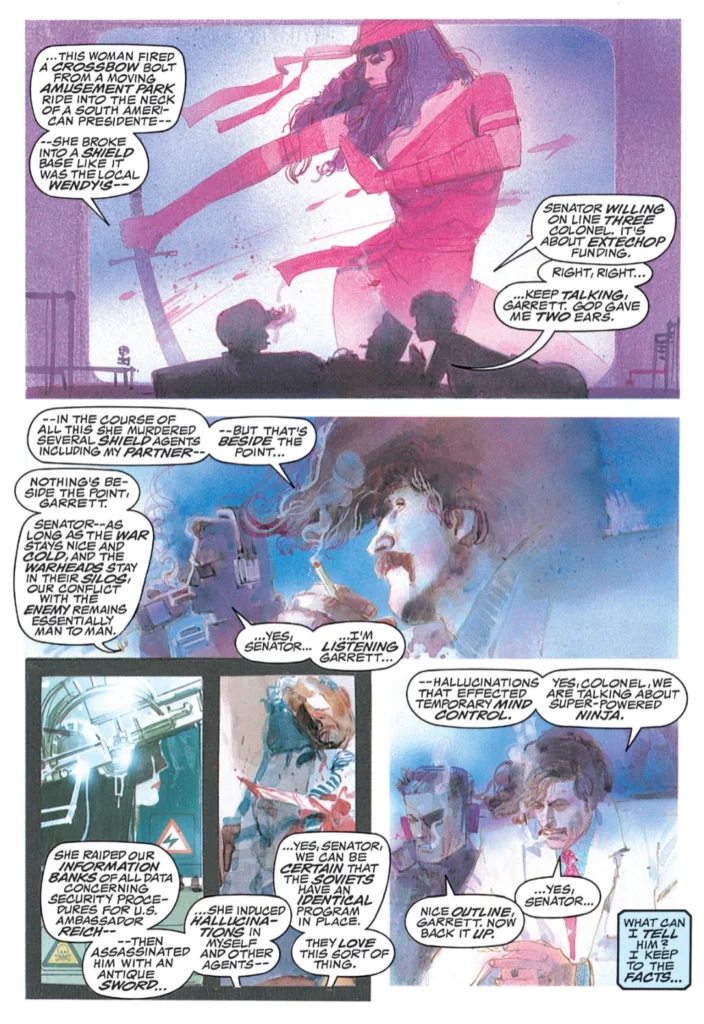
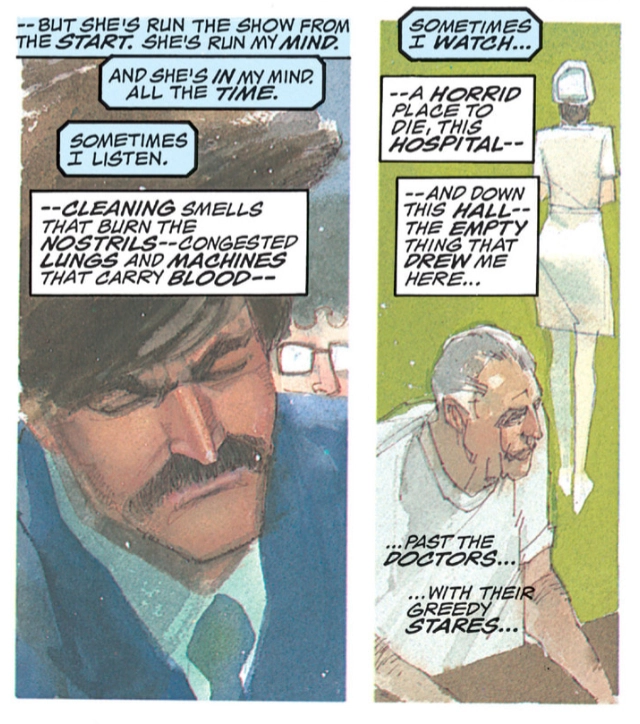
Whatever the reason for its inclusion, the recap nicely summarizes the story so far in the form of a report made by SHIELD agent Garrett to his superior officer and Marvel universe mainstay Nick Fury. Garrett’s report allows him to editorialize by way of his internal monologue, which serves to explain the parts of the plot he’s lying to Fury about, and also to further establish Garrett’s world-weary and decidedly unheroic persona.
The story moves forward from there, with Elektra using her newfound psychic abilities to take over the body of a coma patient, in order to infiltrate the campaign headquarters of Ken Wind. We learn in the previous issues that Wind is a Kennedy-like presidential hopeful who Elektra believes has been taken over by a malevolent supernatural entity called the Beast.
In this issue Miller goes to great lengths to portray just how confusing it might be to read someone else’s mind. It’s something rarely seen in comics, even in a genre where characters with supernatual abilities are commonplace, and Miller handles the concept deftly, with Garrett’s mind melting into Elektra’s to the point that he sometimes can’t tell which thoughts are his own. More importantly, Elektra finds that her coma patient isn’t quite the empty vessel she was hoping for, and the girl’s naive, romantic thoughts threaten to overwhelm Elektra’s at every turn.
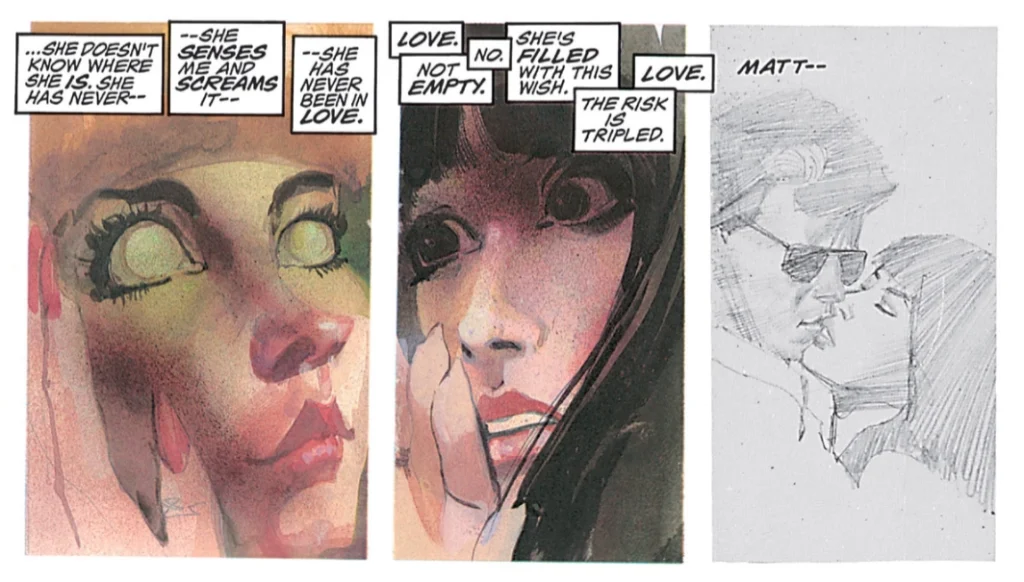
The pacing shifts into overdrive as Garrett’s ill-timed interview with Ken Wind reveals Elektra’s plan, and also makes clear that what Elektra believes about Wind is real, or at least that Garrett now believes it too. There is a scene where Wind reveals to Garrett that he knows what’s going on that’s absolutely chilling, and sets off a 16-page action sequence that lasts for the rest of the issue.
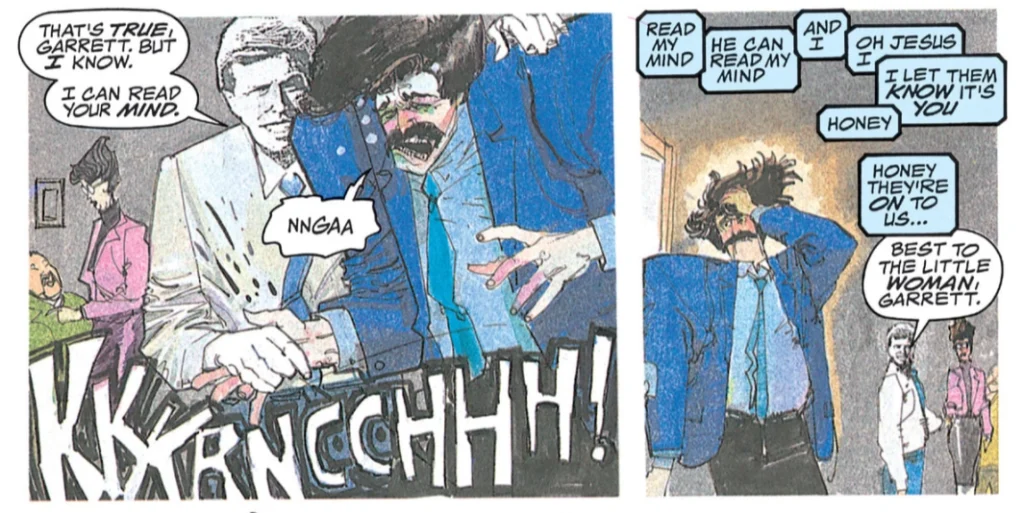
Sienkiewicz opts for a fairly cartoony illustration style for the bulk of this issue, and it serves the pace of the story very well when combined with Miller’s overlapping captions. We get a breakneck series of events showing Elektra losing herself in the thoughts of her borrowed body, while Garrett rushes to her rescue in an absolute panic. But lest we forget who is ultimately in control, the issue ends with Garrett as the one in need of a rescue.
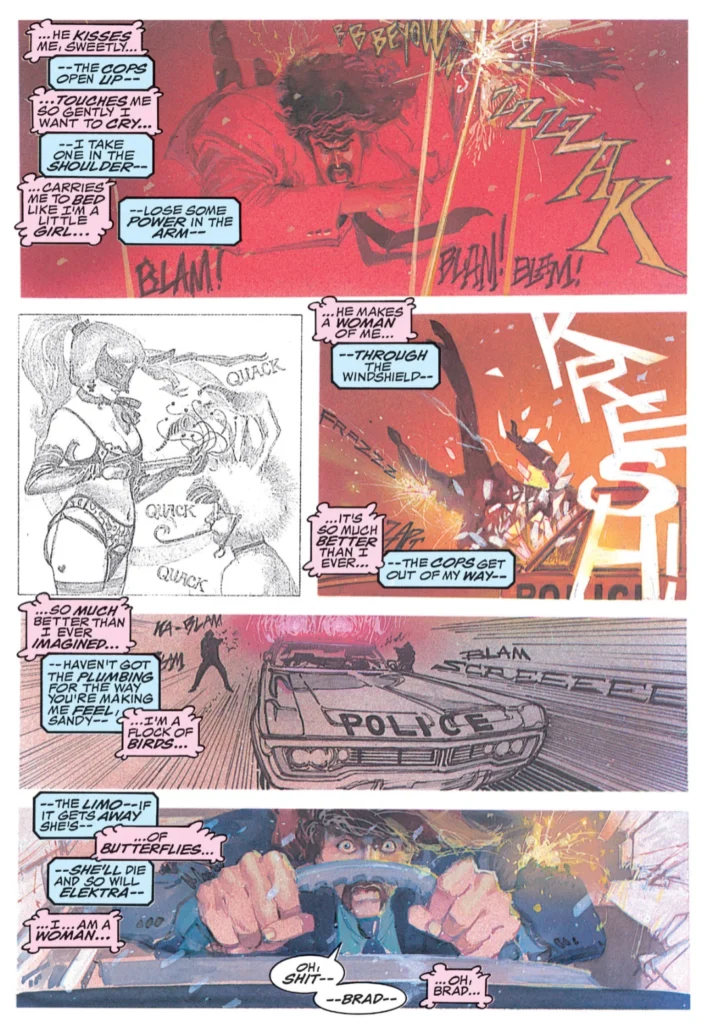
Marvel Graphic Novel #24: Daredevil “Love and War”
Story by Frank Miller; artwork by Bill Sienkiewicz; lettering by Jim Novak
Ostensibly, the purpose of Love and War was to bridge the gap between the end of Frank Miller’s original run on Daredevil (in issue 191, cover date February 1983) and his return to the series with the start of Born Again three years later. Miller (and in all likelihood, his fans) was perhaps understandably uninterested in what had happened in the series over the intervening three years. The story in Love and War actually picks up on a storyline begun in Daredevil issue 177 (cover date December 1980), concerning the Kingpin’s backing of a corrupt mayoral candidate. Daredevil finds the Kingpin’s missing wife Vanessa, apparently amnesiac and living among a tribe of sewer dwellers. Knowing that Vanessa is the Kingpin’s only weakness, Daredevil uses that to force him to shut down his puppet candidate in exchange for Vanessa’s safe return.
At the start of Love and War, we find Vanessa still catatonic, and the Kingpin beside himself with grief. He has extended an invitation to Paul Mondat, a world-class psychologist, to help with Vanessa’s recovery, but the Kingpin being the Kingpin he cannot simply hire the man. Instead he kidnaps Mondat’s blind wife Cheryl, reasoning that concern for her safety will motivate Dr. Mondat to give Vanessa’s recovery his all.
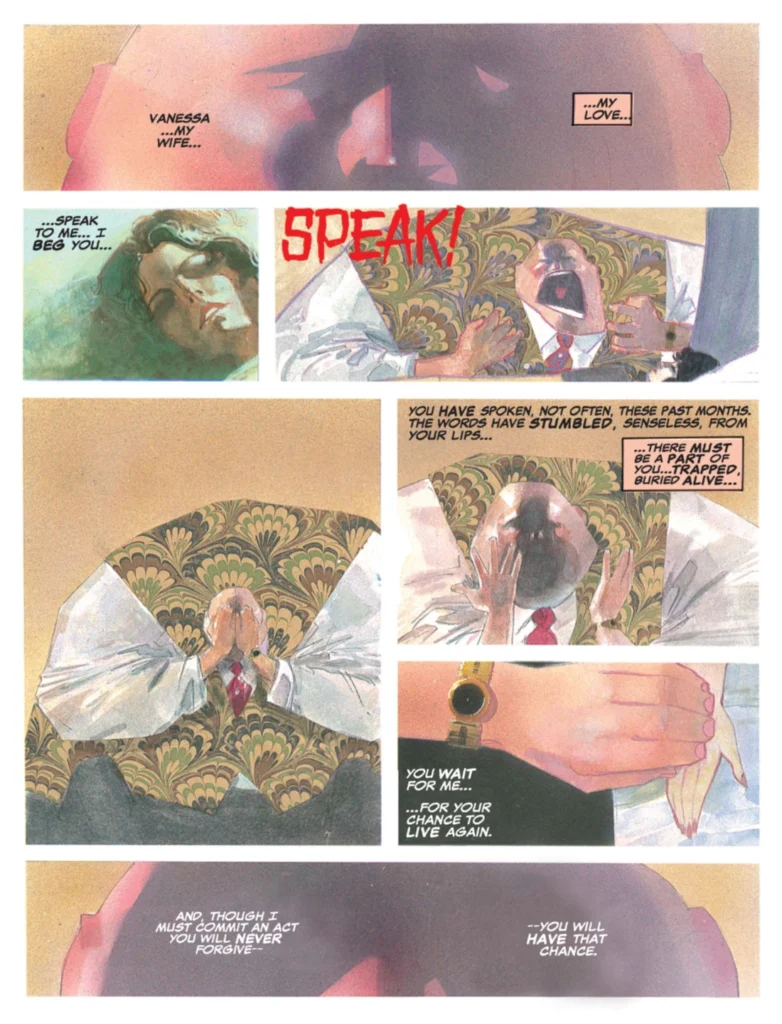
Miller loves his colorful, usually unreliable narrators, and Love and War is no exception. This time the bulk of the story is seen through the eyes of Victor, a drug-addled, delusional kidnapper that the Kingpin has trusted to keep Cheryl safe.
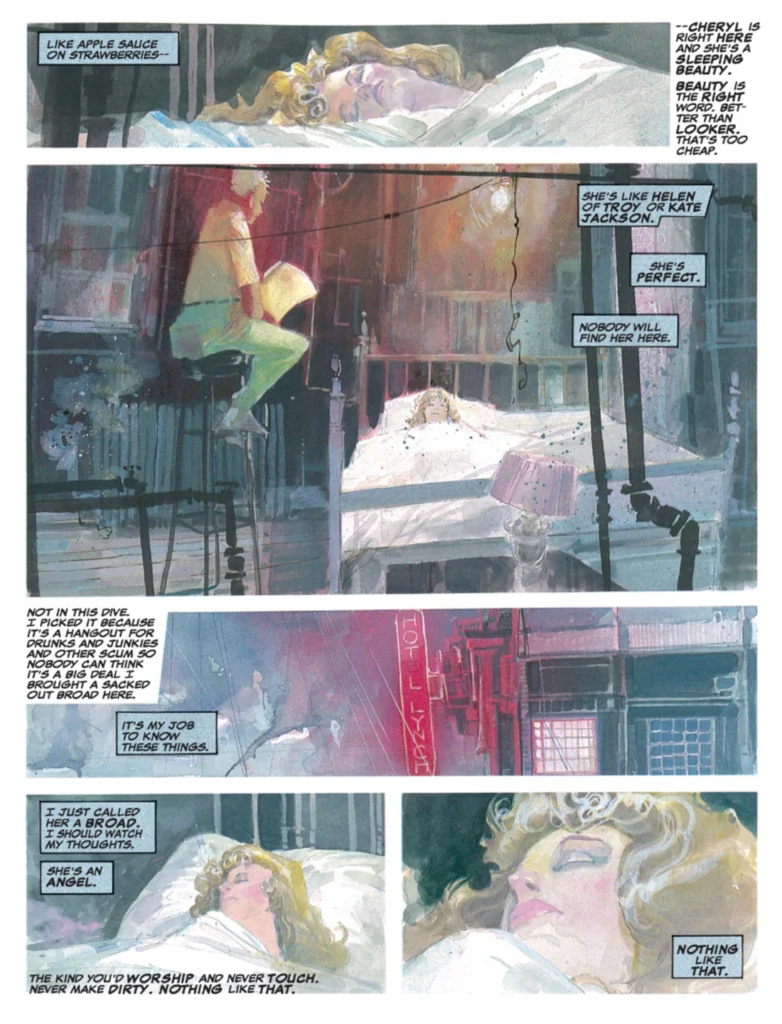
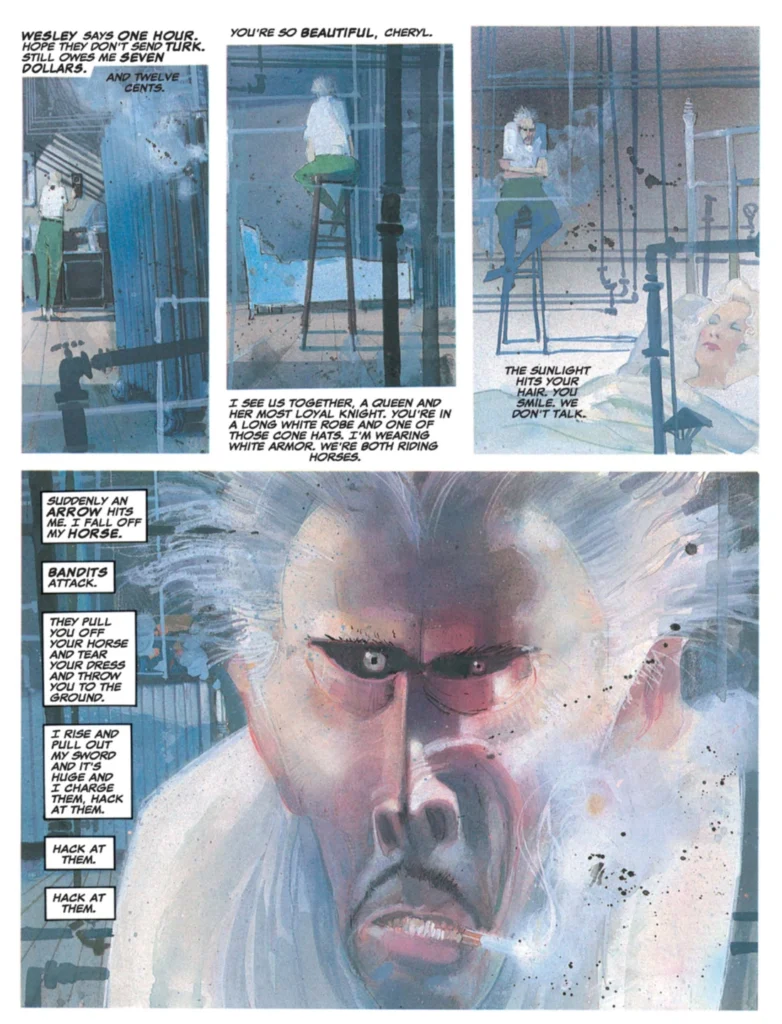
Daredevil: Love and War pages 12 and 16. © Marvel.
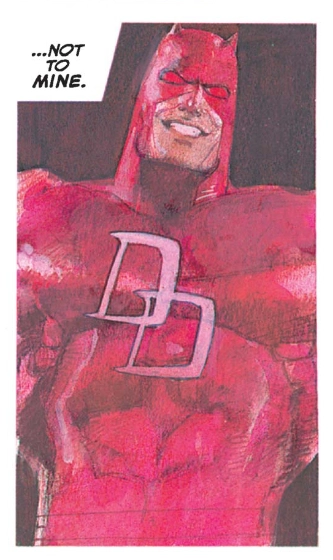
Miller is clearly having a ball with Victor’s internal monologue. He begins as someone very confident in his own competence, but swiftly devolves into delusion. Taken by her beauty, he imagines his captive as a fairy tale princess and himself as her noble protector, a fantasy reinforced when Daredevil finally tracks him down to take his princess away.
Daredevil is probably the least interesting part of the story. Early on he makes the usual mention of his blindness and enhanced remaining senses, but from that point he engages in fairly unimaginative superheroics as he tries to figure out what the Kingpin is up to. The characterization comes dangerously close to being an overconfident bully, and it’s not helped by artist Sienkiewicz’s exaggerated, overly muscled depiction of the character.
The middle act of the book follows Daredevil as he entertains a “will they or won’t they” infatuation with Cheryl (she must really be something) while planning a daring raid on the Kingpin’s office tower to rescue Dr. Mondat and Vanessa.
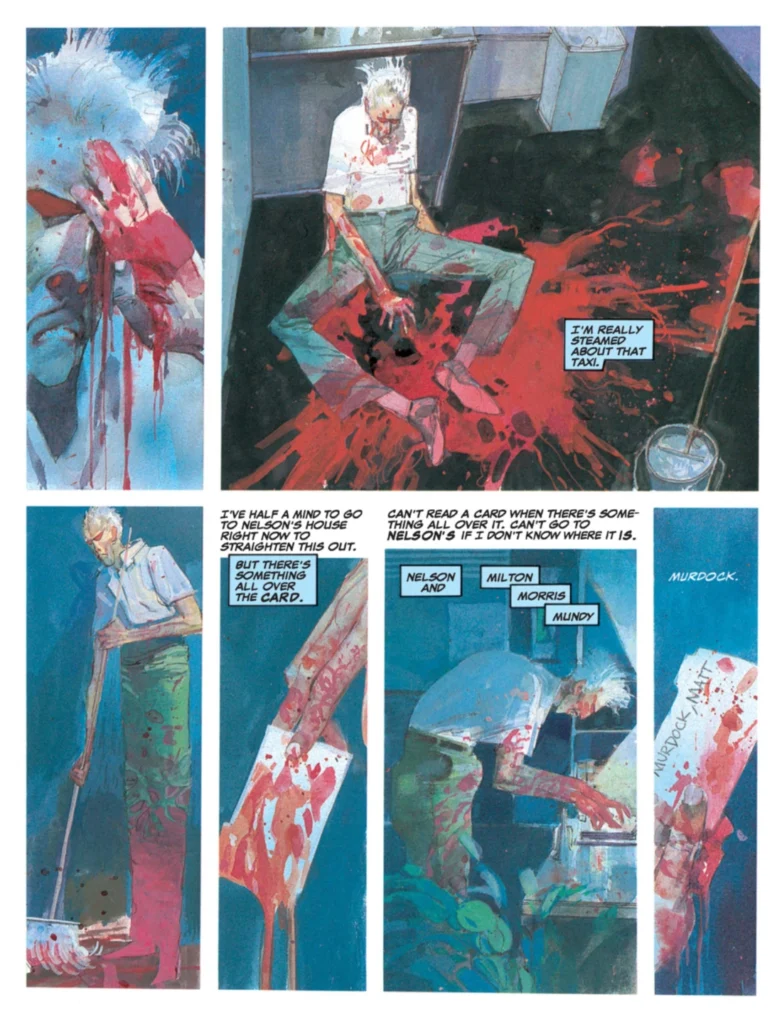
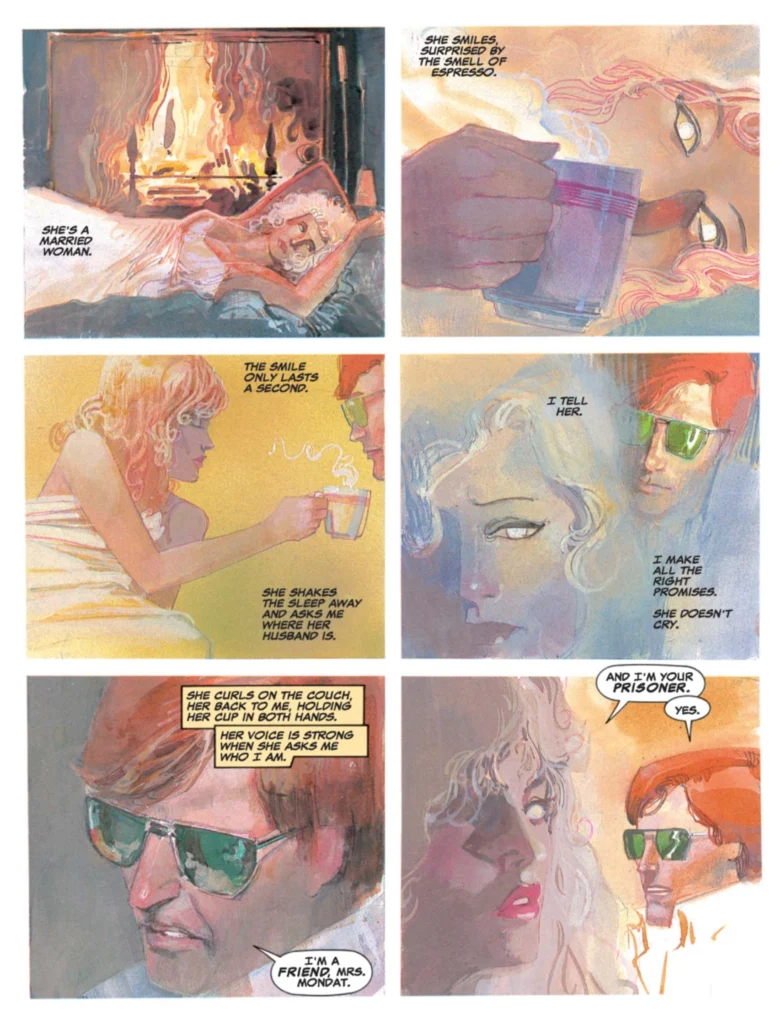
Daredevil: Love and War pages 39 and 40. © Marvel.
Meanwhile, Victor prowls the streets looking for his princess. It would be easy to dismiss Victor as an ineffective crazy person, but Miller cuts his increasing delusion with a fierce intelligence that makes a connection between Daredevil and Matt Murdock merely by speed-reading newspaper articles at the library. Miller really puts his talent for giving his characters distinct internal voices to good use here: Victor’s thoughts, self-justifications, and memory blackouts are positively terrifying.
The conclusion of the story comes from an unexpected angle – in the process of Vanessa’s recovery, Dr. Mondat has planted in her mind the idea that she doesn’t want to be with the Kingpin any longer. In a rare instance of someone getting the better of the Kingpin, Dr. Modat has Vanessa spell out the word “XKAYP” with the childs’ blocks he’s been using to reconstruct her mind. He follows this up with the chilling declaration that “–you have my wife – and I – I have yours!”
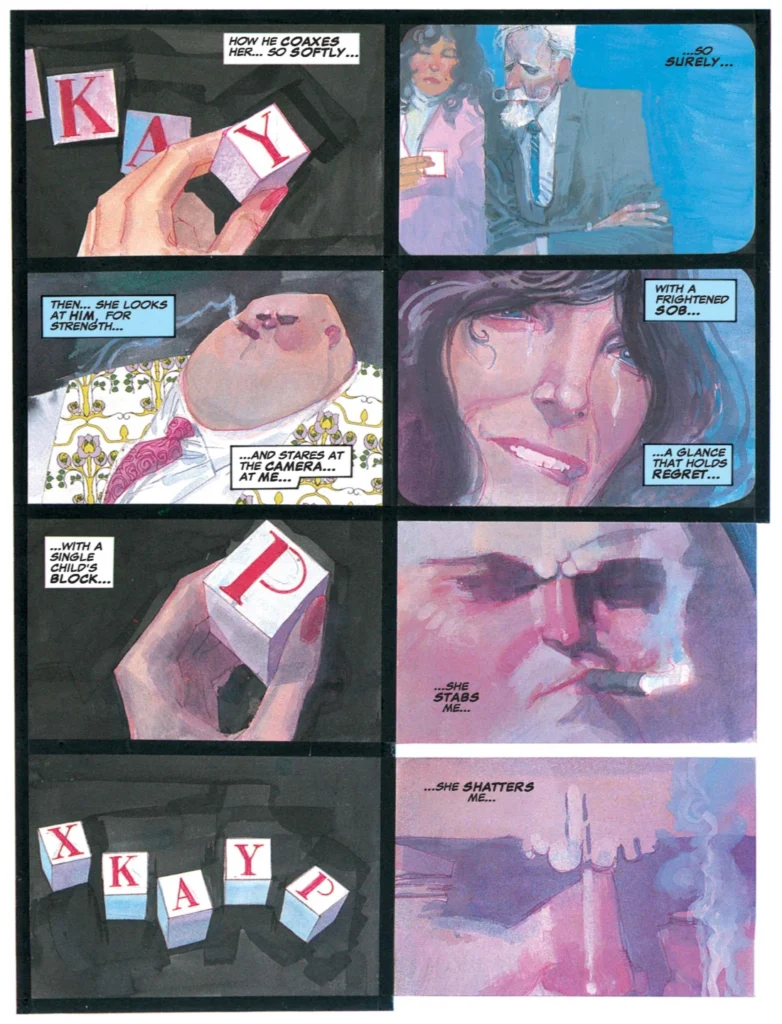
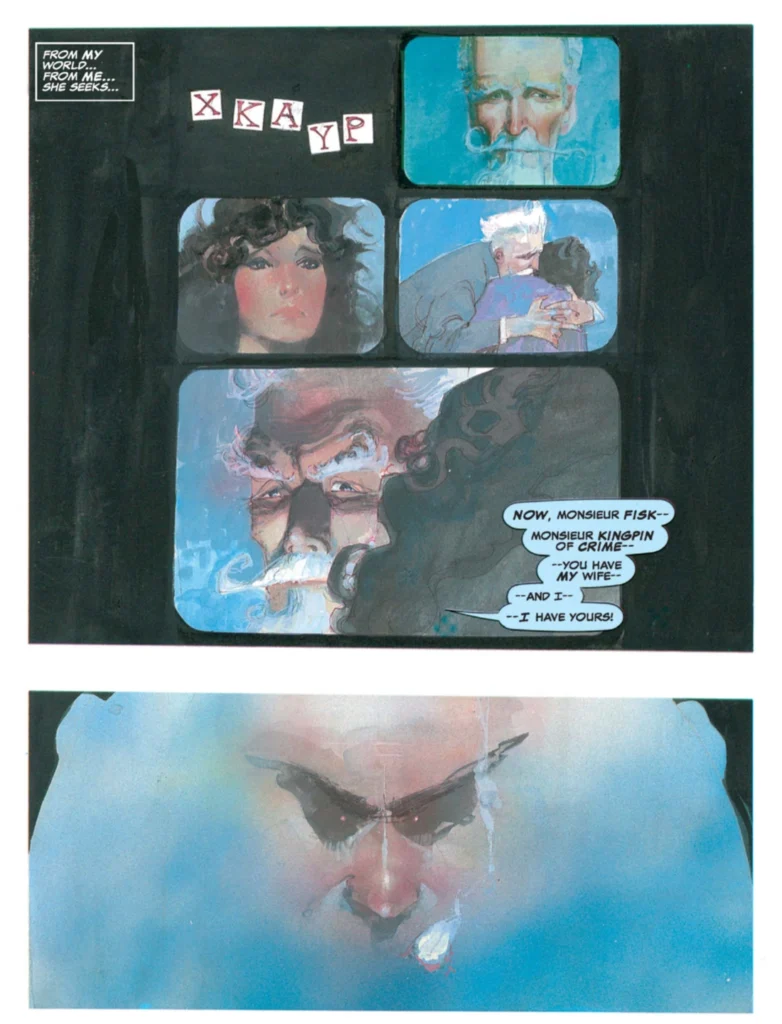
Daredevil: Love and War pages 43 and 46. © Marvel.
While it is interesting to see the supposed victim take matters into his own hands, it does invalidate most of what Daredevil does in the final act as unnecessary – he says as much himself in the final pages of the story. In a similar vein, Cheryl proves herself not quite so in need of protecting as she successfully defends herself from Victor when he eventually finds her hiding out in Matt Murdock’s apartment.
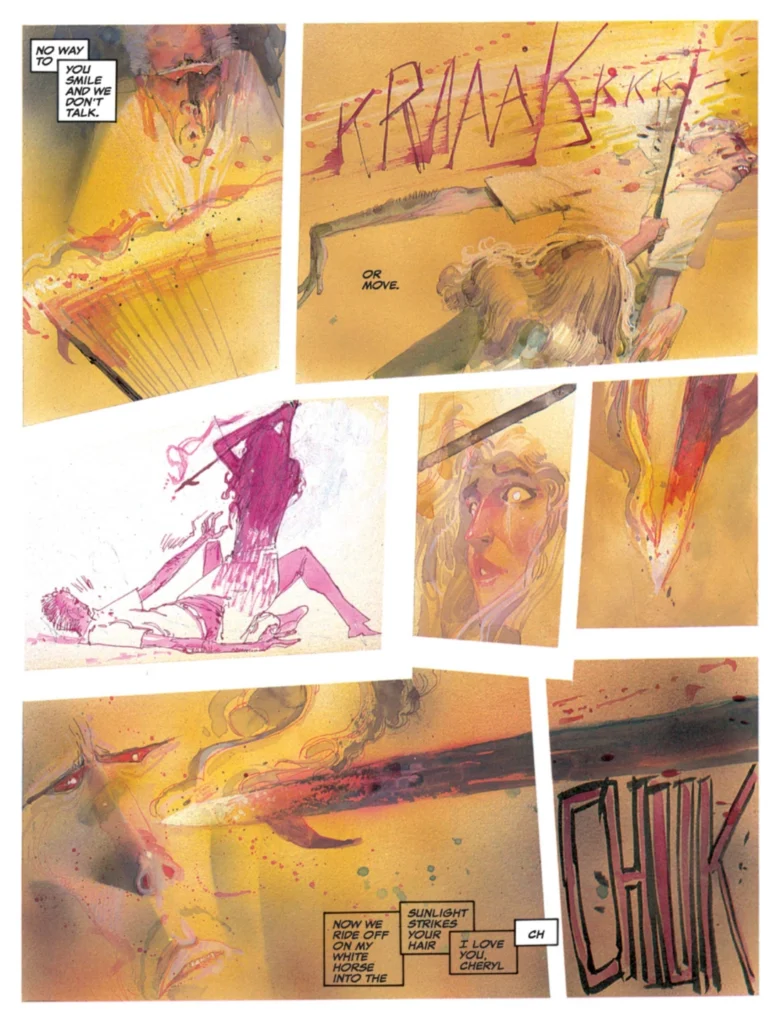

Daredevil: Love and War pages 59 and 60. © Marvel.
We are left with a Daredevil story in which Daredevil’s role is largely unnecessary – indeed, it might make for a tighter story if he were removed from it all together. What’s more, Daredevil’s lack of impact on the story’s events means that we still don’t really have an explanation for why the Kingpin is so desperate to revenge himself on Daredevil at the beginning of Born Again that he’s willing to risk his entire empire to see it done.
While it is certainly a well-executed and interesting graphic novel, especially in the context of 1980s superhero fare, it’s easy to see why Love and War is the forgotten middle child of Miller’s ’80s work, wedged as it is in between several superior books.
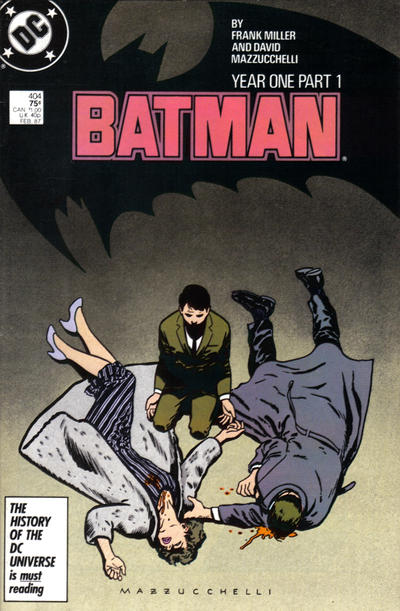
Next time:
Miller re-teams with his Born Again collaborator David Mazzucchelli to tell the definitive version of Batman’s origin, while moving along with Elektra and Garrett’s unlikely romance…
Batman #404 cover art by Dave Mazzucchelli. © DC Comics.
